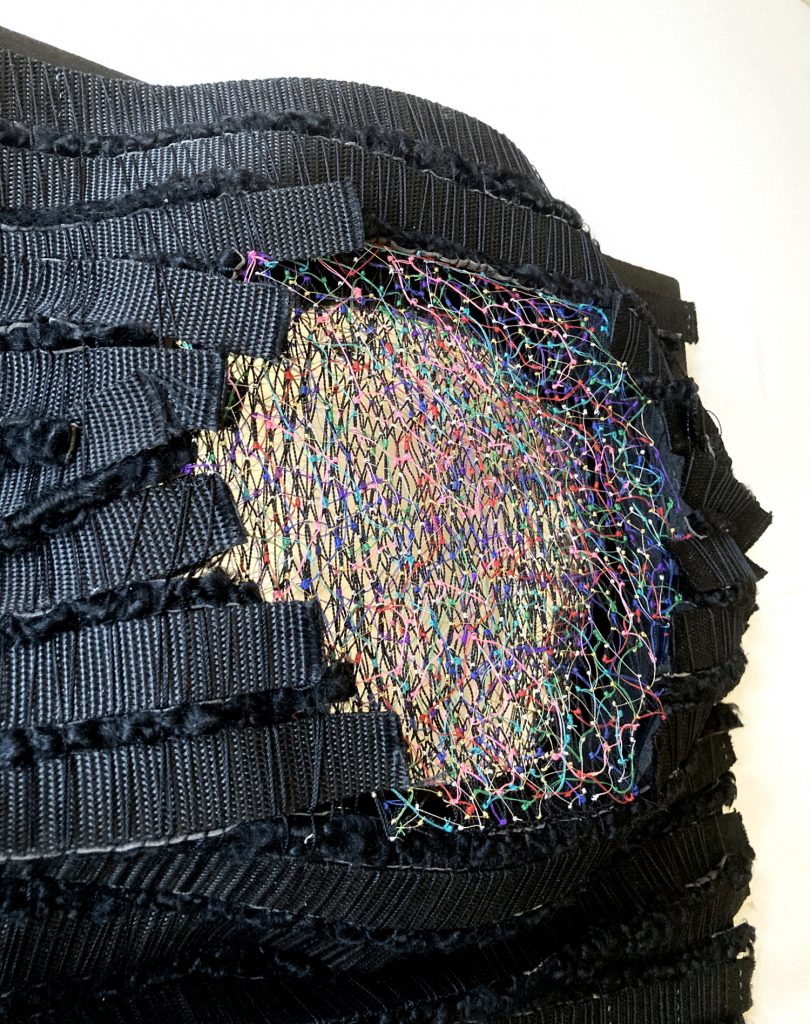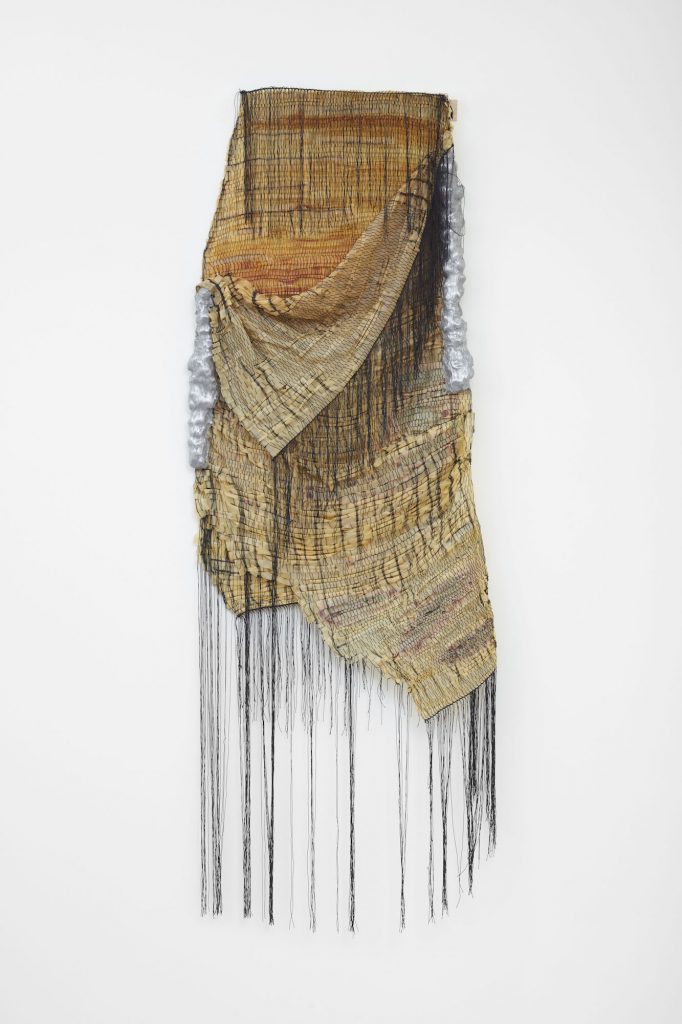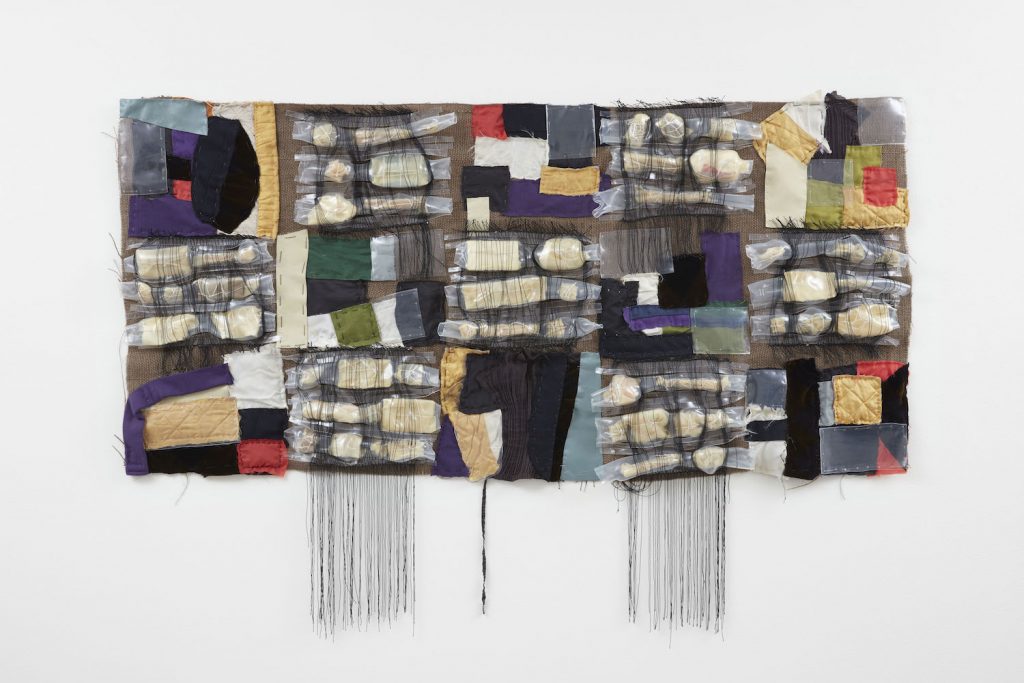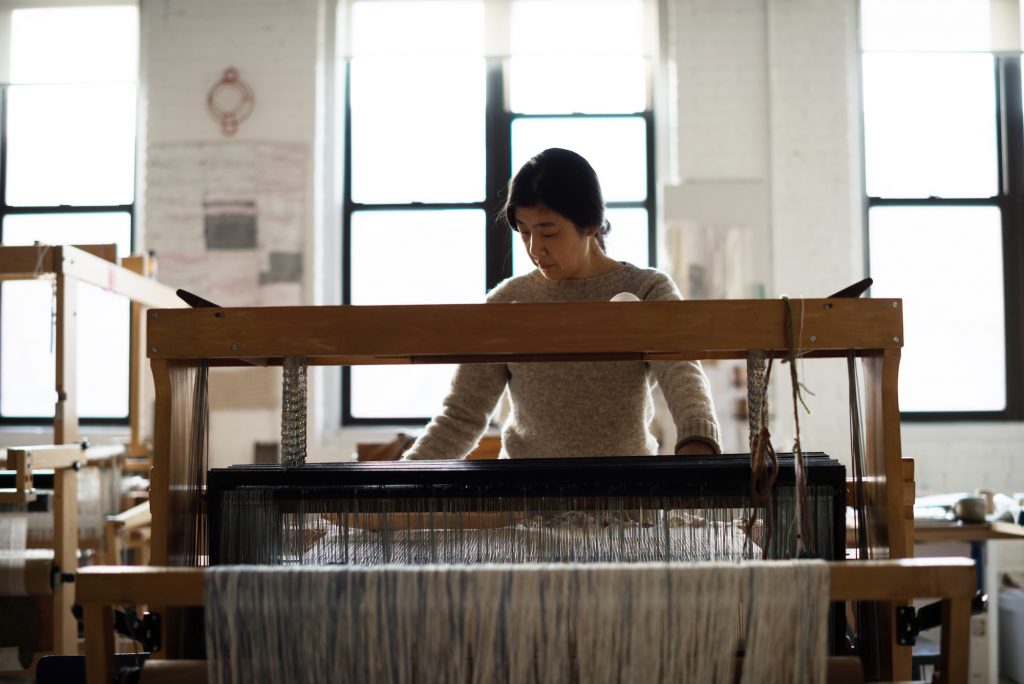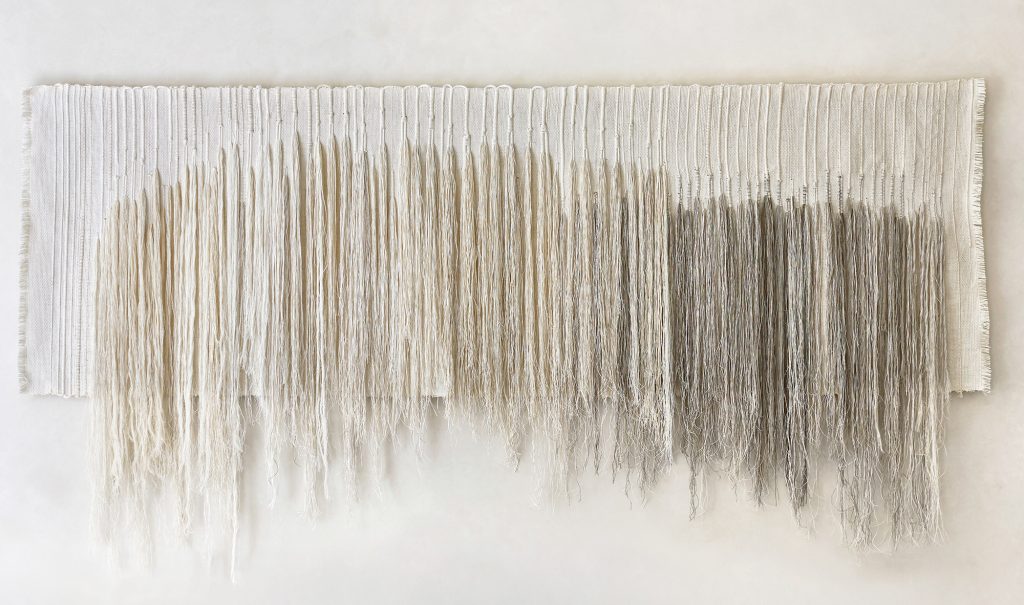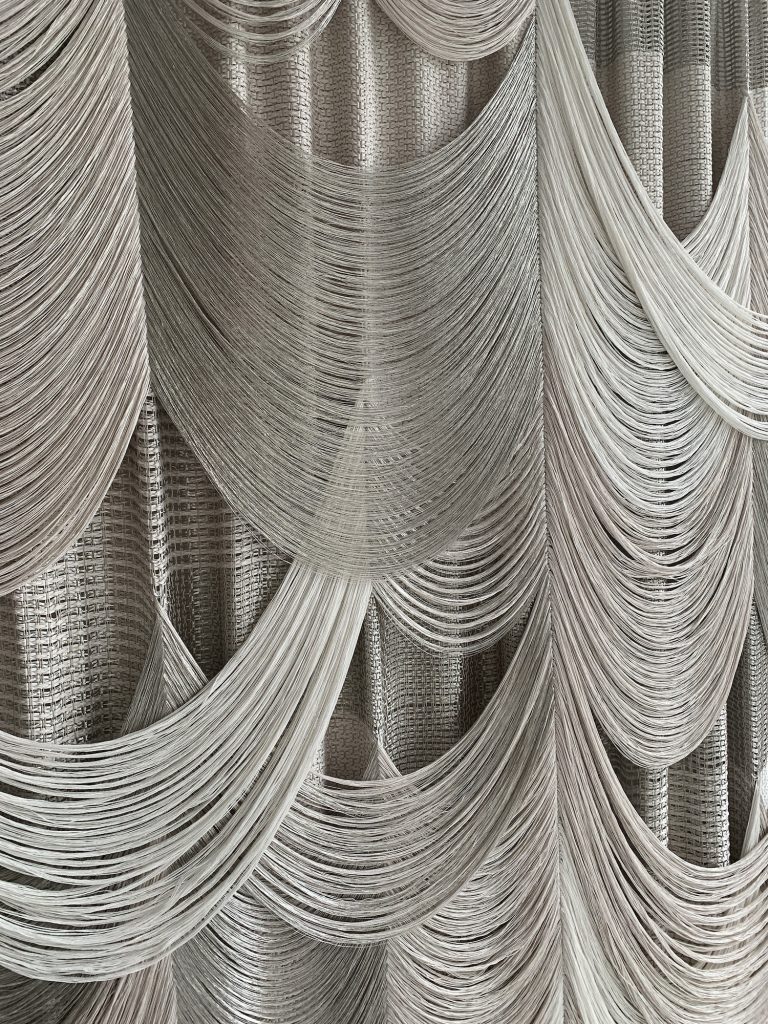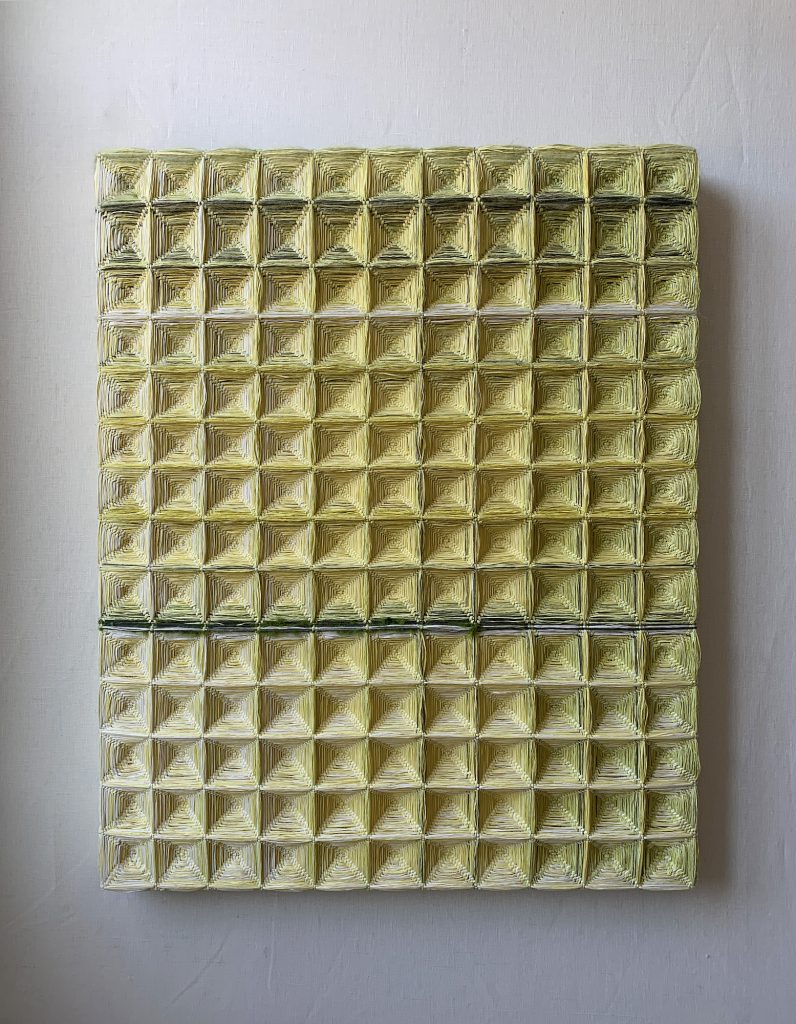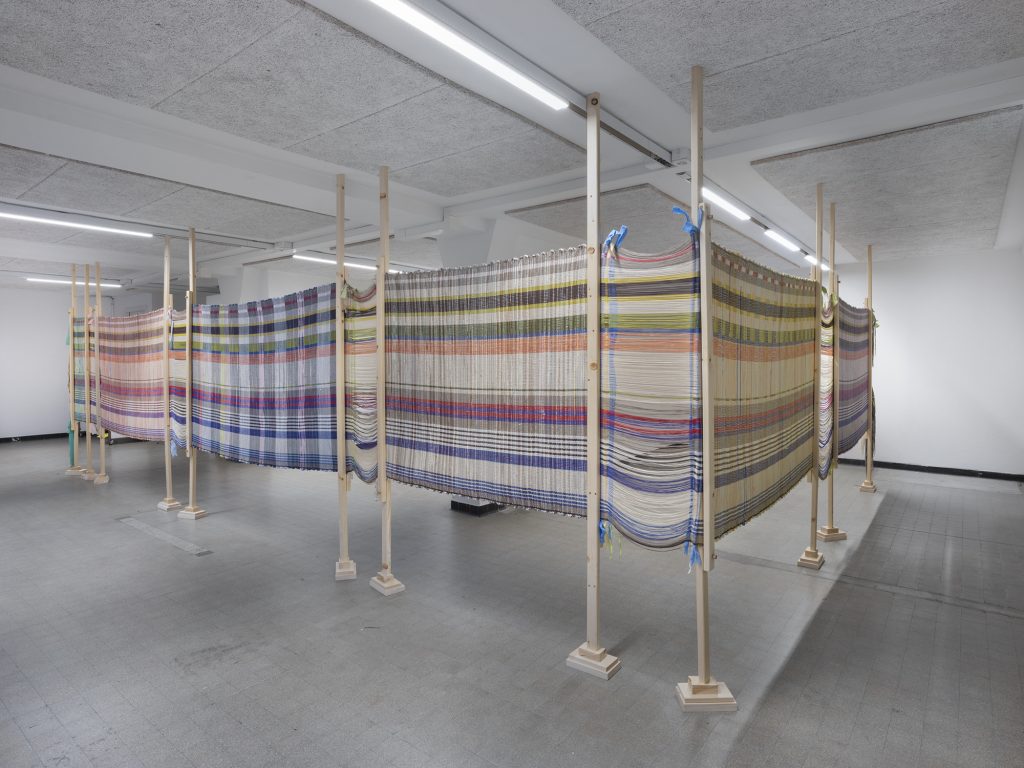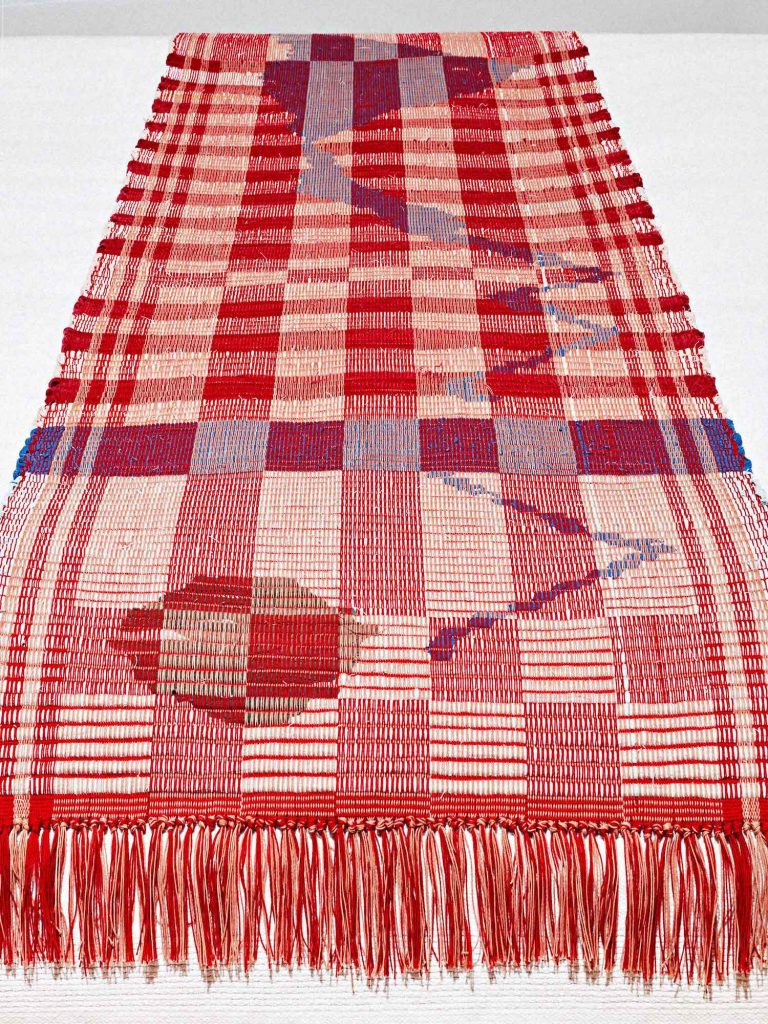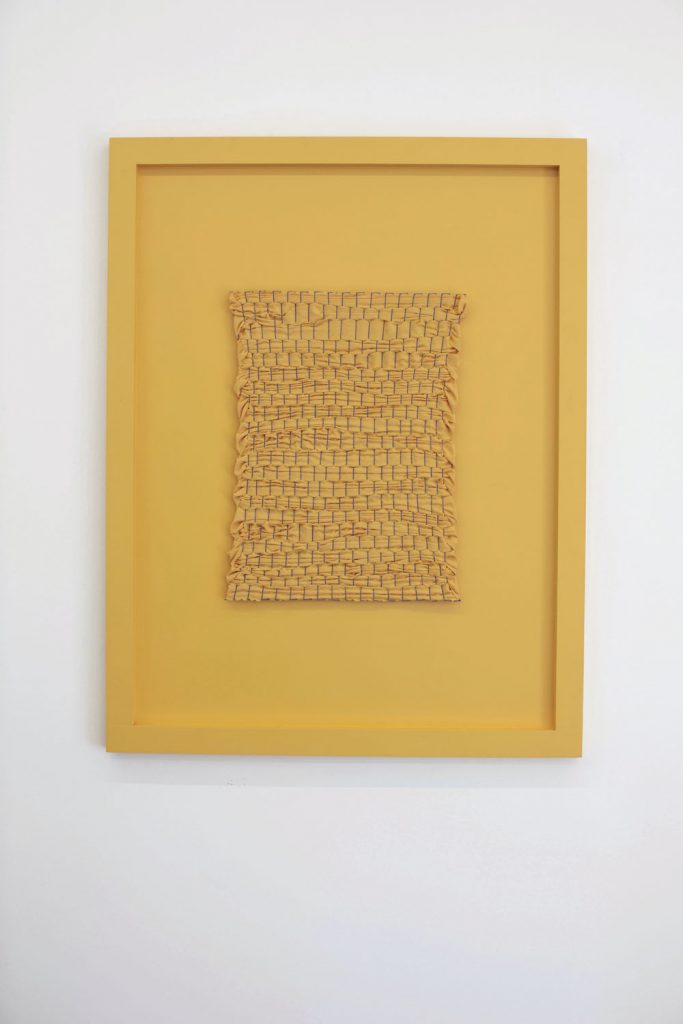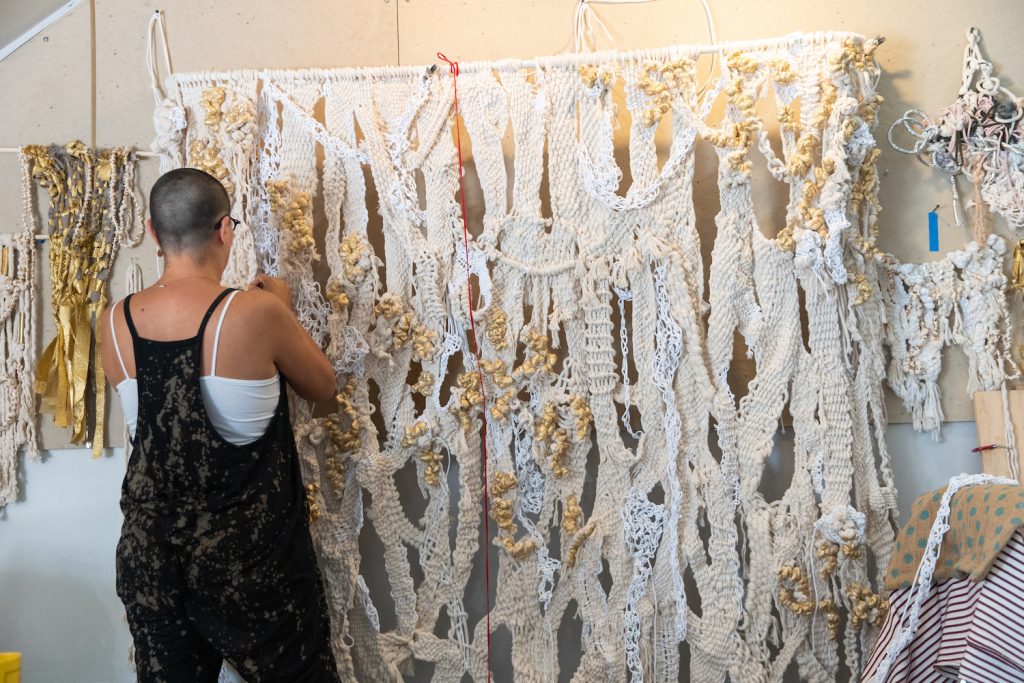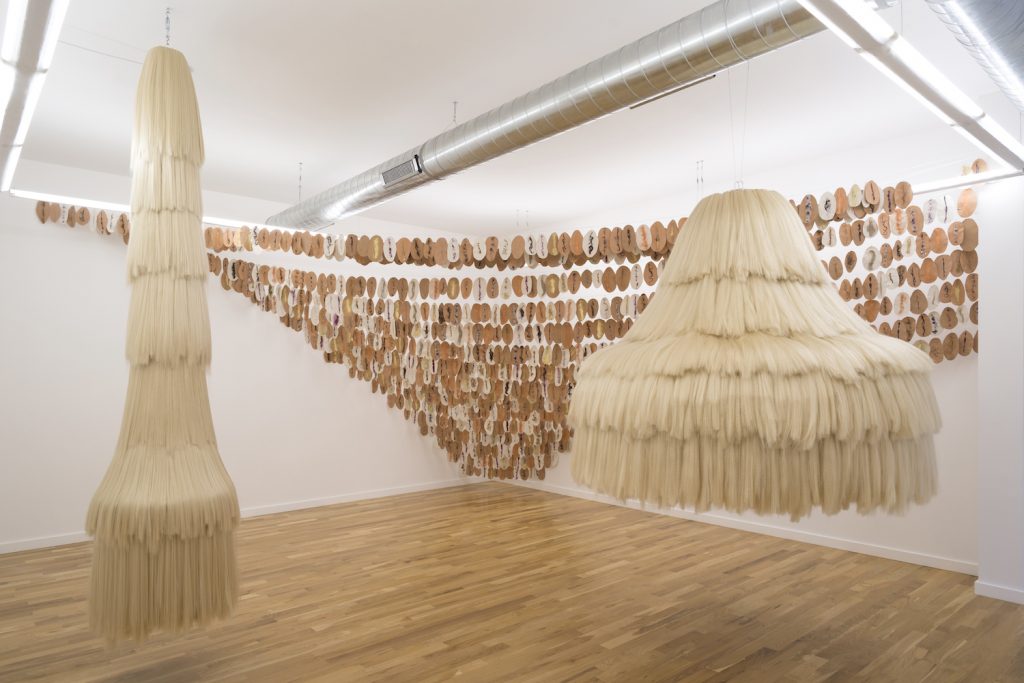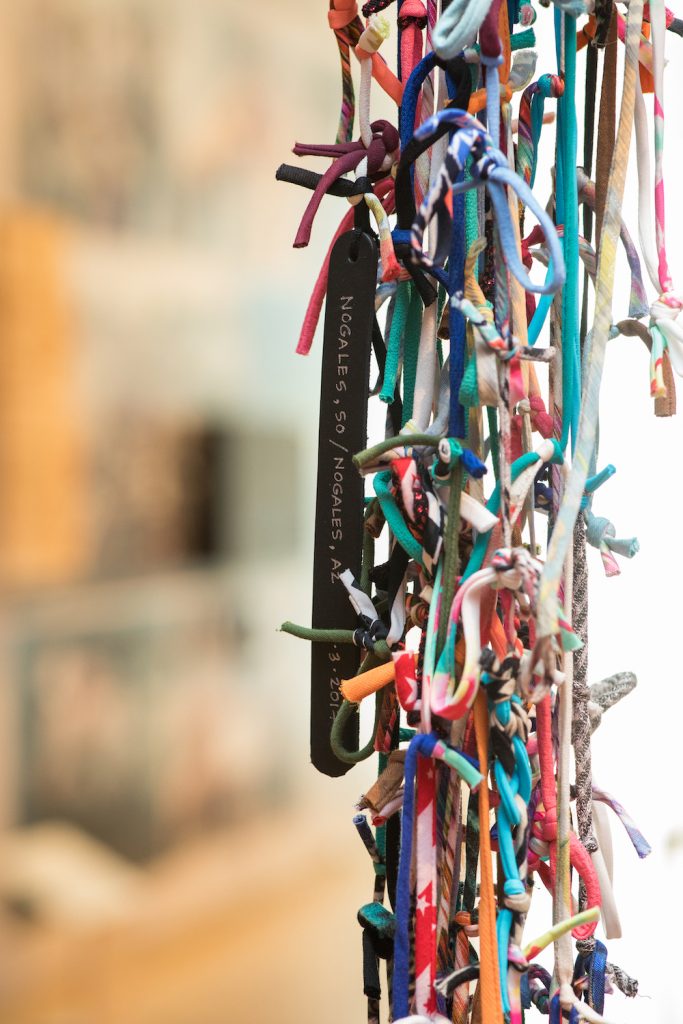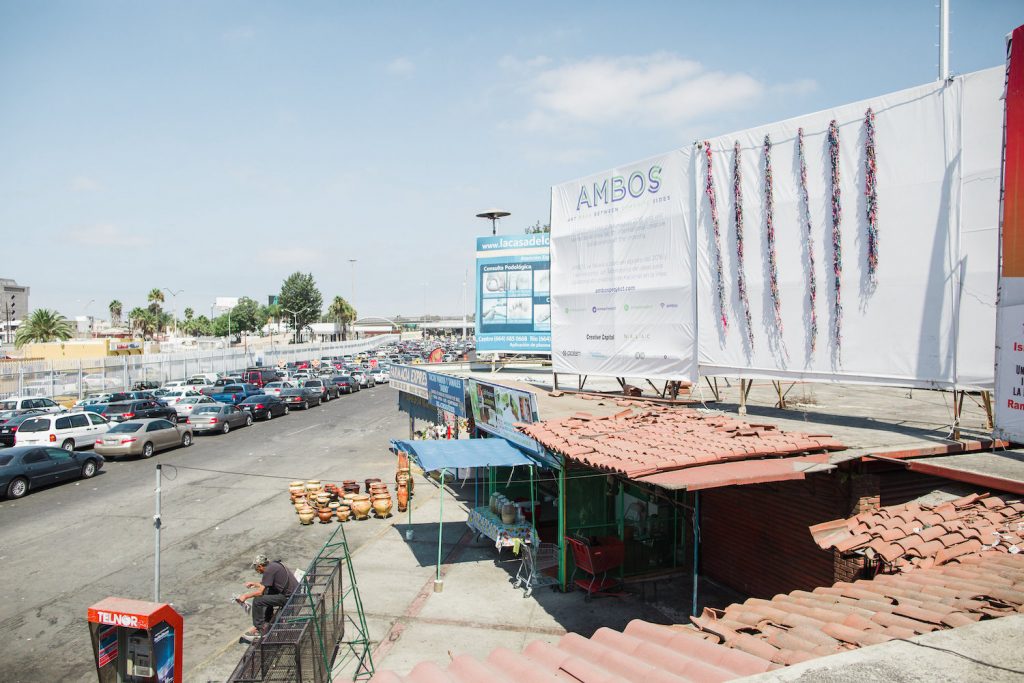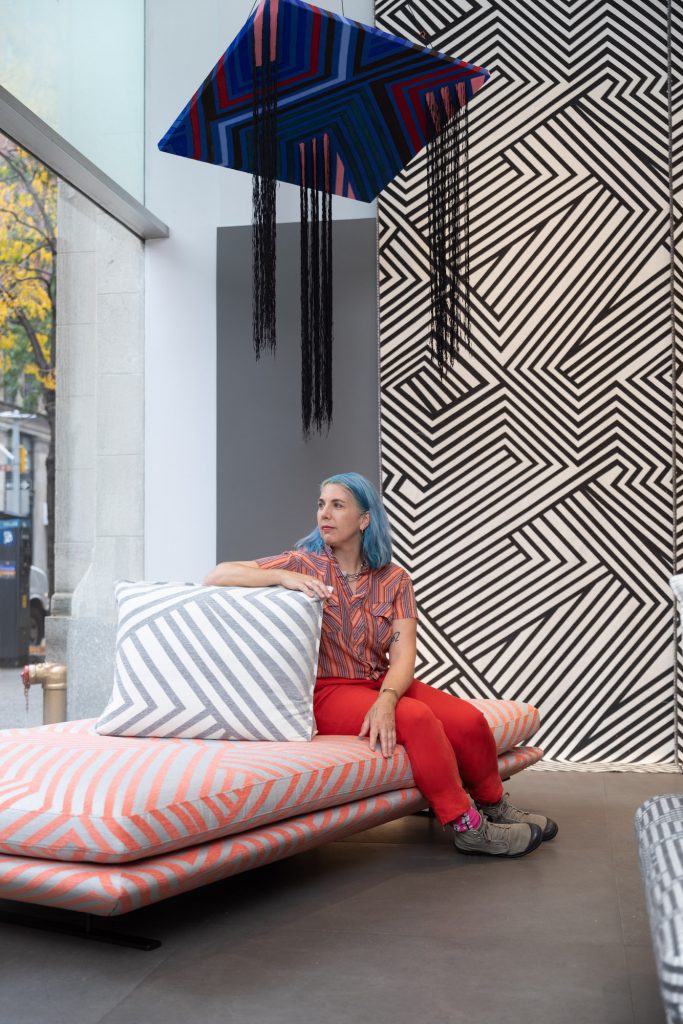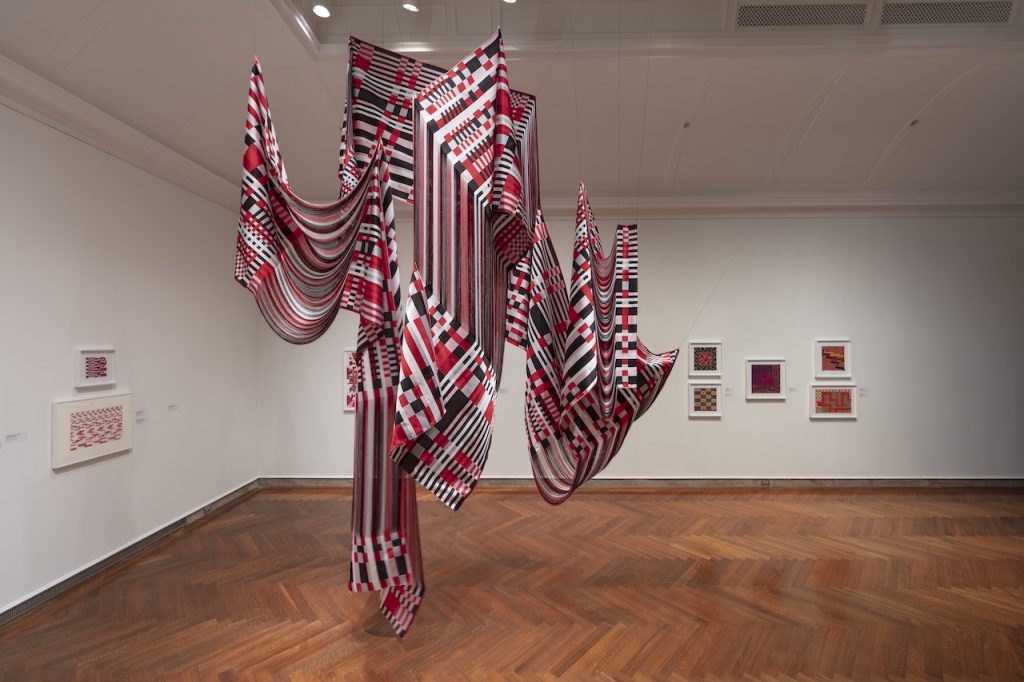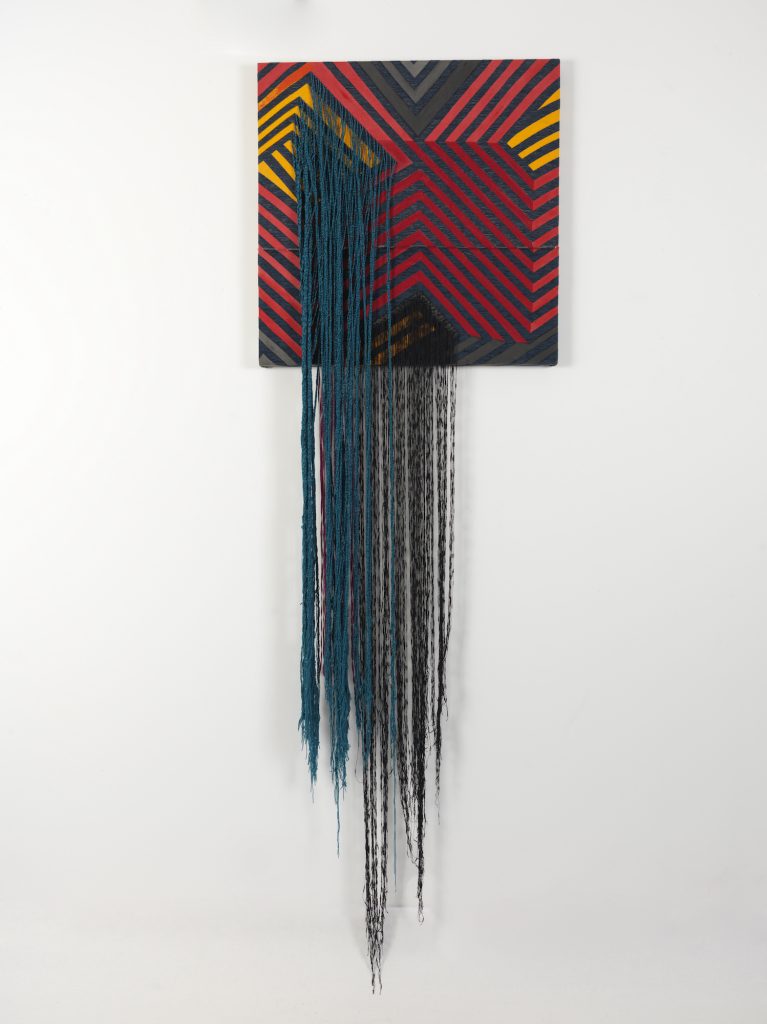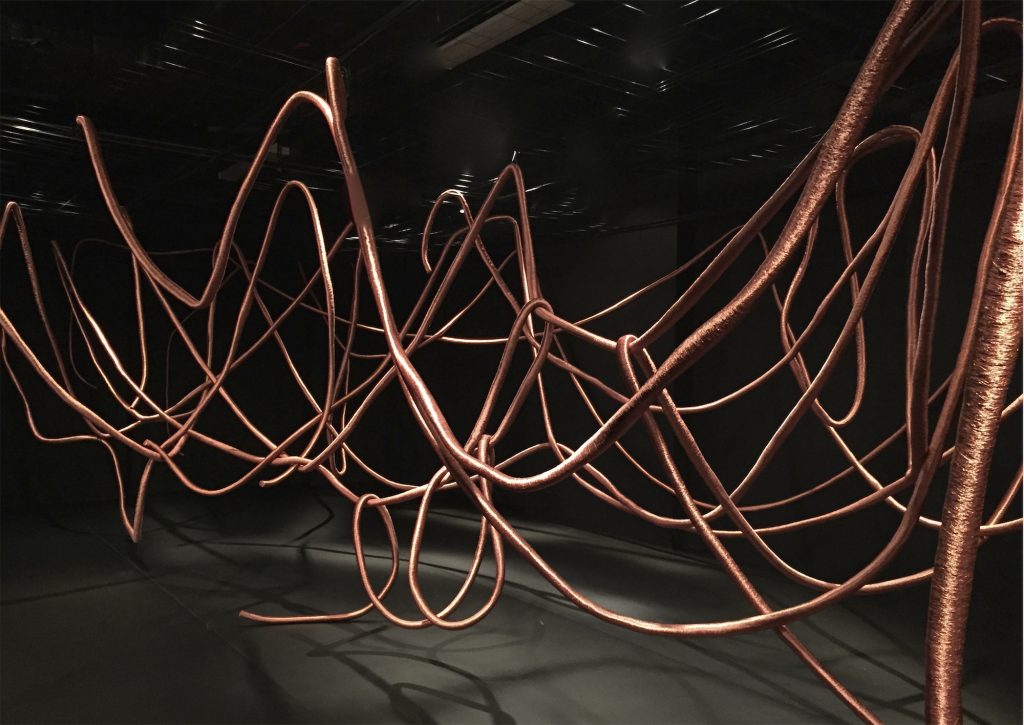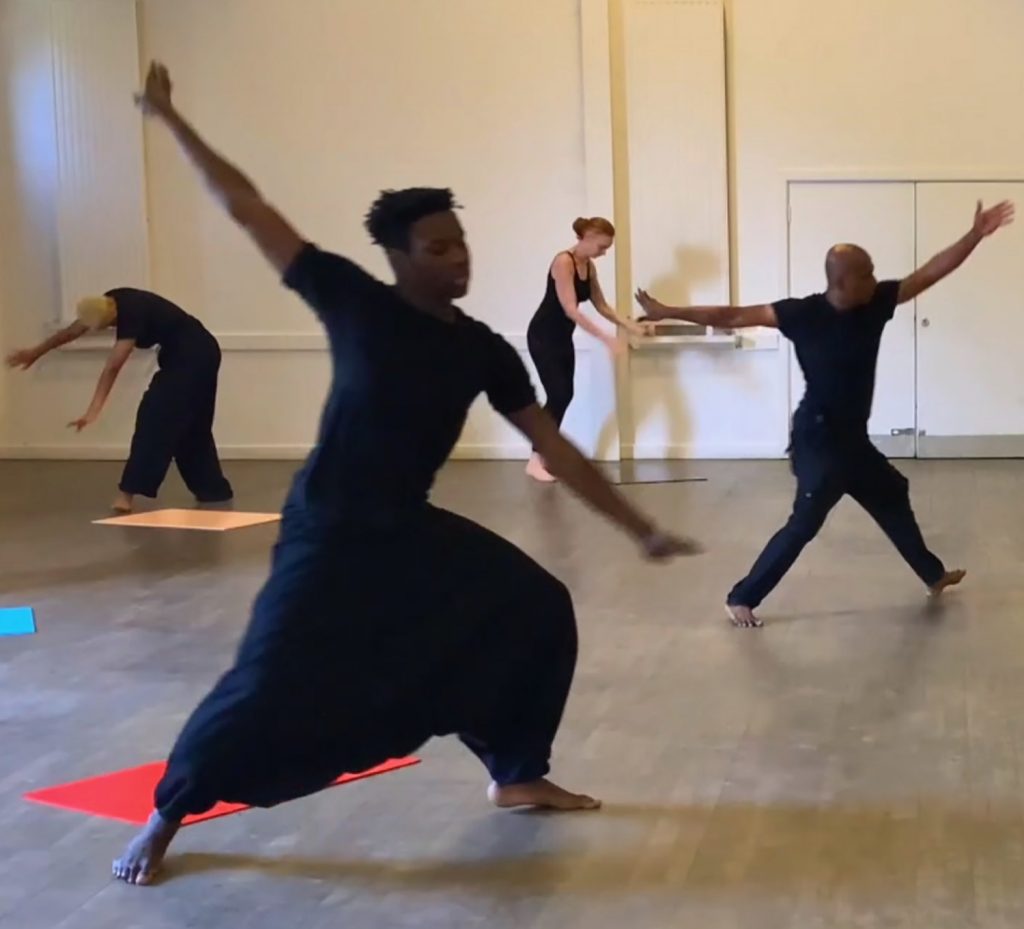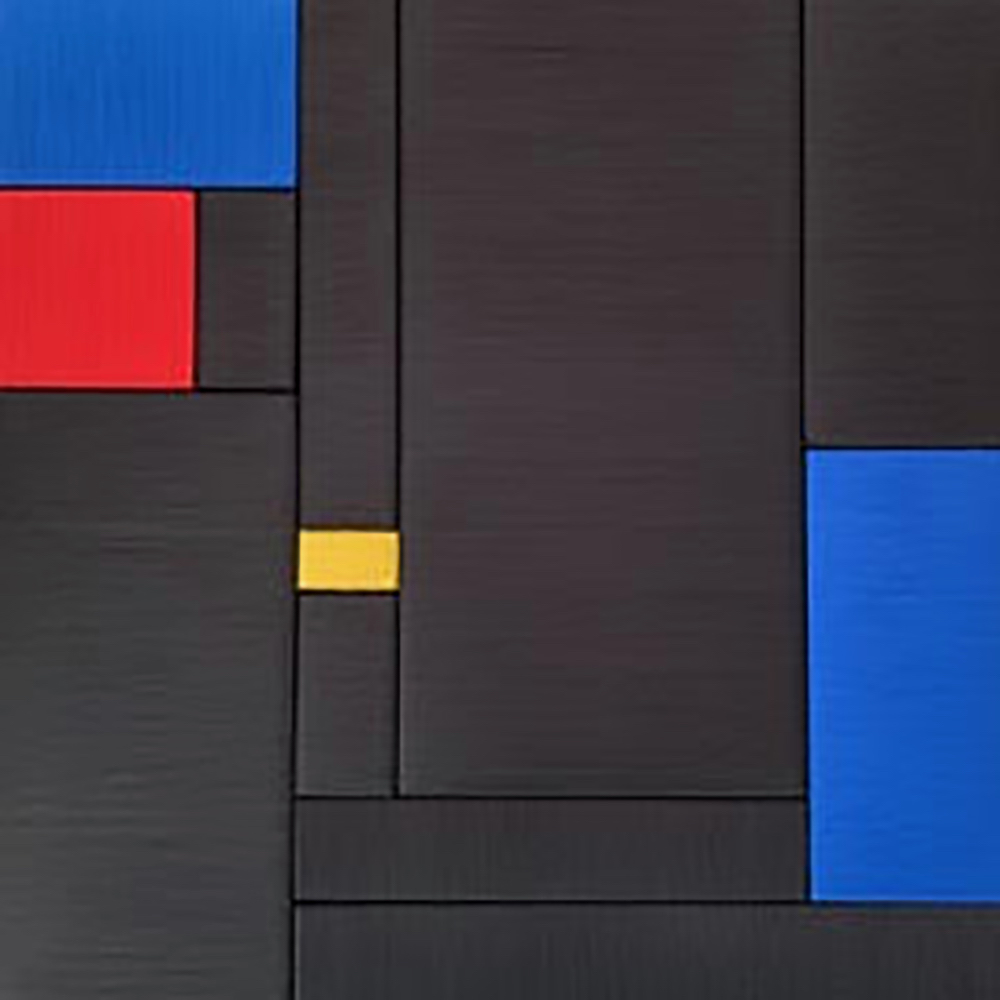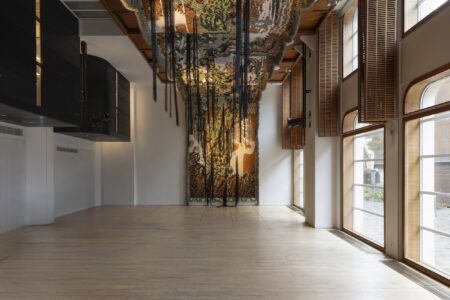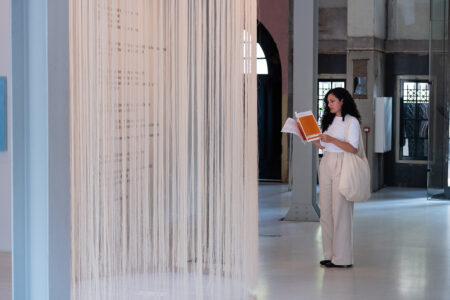Weaving in Contemporary Art and Design
For our S/S 2021 issue: TLmag35: Tactile/Textile/Texture, TLmag featured six contemporary artists who are using the traditions of weaving to create groundbreaking and innovative work.
Weaving has been a form of communication for over 15,000 years, tracing and revealing elements of the human experience in its threads. Today, this ancient tradition is as contemporary as ever, and its ability to convey meaning and message still runs deep. Artists and designers are using weaving in innovative ways and developing their own techniques, passionate about its potential as a medium and tool to convey their creative vision. Through warp and weft and the idea of weaving as a connective tissue, these six artists are exploring issues of history, tradition, migration, the environment, sexuality and domesticity. They are establishing new frameworks in art and design and they are unbound by conventions or traditional categories.
Luam Melake
Luam Melake makes handwoven sculptures and functional furniture objects using unexpected materials that carry layered meanings and subtle cultural references. Melake, who studied architecture and art history at the University of California at Berkeley, first connected with weaving when learning about the Bauhaus weaving workshop; But it was seeing “Sheila Hicks: 50 Years,” the retrospective exhibition of the legendary artist at the ICA Boston in 2011, when things clicked and she saw the idea of “weaving as a system for creating structure.” Using a rigid heddle table loom, Melake weaves sculptural stories using materials that are emotionally charged and purposefully selected to engage with the viewers reading of the work. “My woven works are about giving physical form to emotions or ideas that are difficult to express with words. Since we live mostly in the built environment and in a world full of commodities, those materials carry meaning and significance relevant to our lives. I believe we form many subconscious asociations with those materials that are somewhat consistent across cultures,” she says. Talismanic Quilt, 2020, made during the pandemic, uses objects found around her house that held deep emotional meaning. Like a quilt, this wall-hung weaving tells micro-stories within each patchworked piece of fabric, thread and in this case, object. Melake was inspired by a West African practice of packaging found objects that have specific cultural meaning and stitching them to tunics, to create a specific “energy formula that propels the wearer towards action.” In this way, she was trying to create positive energy and personal strength during such a difficult and isolated time.
luammelake.com
Hiroko Takeda
For Hiroko Takeda, a New York-based artist from Japan, the loom is an instrument of endless experimentation. Trained in the tradition of the Mingei Undou (Japanese Arts and Crafts Movement), she worked for many years between Kyoto and Tokyo honing her skills in the fundamentals and folk traditions of washing, carding, spinning and weaving. After working in New York with Jack Lenor Larsen for 8-years, she opened her own studio in Brooklyn, where she creates both site-specific design projects and artworks for exhibitions and collectors. Her work seems to hover between control and fluidity, precision and the unknown. Being bound to the loom seems to unbound her creative flow. “I’m something of a restless weaver. Rather than weaving long lengths of one traditional structure (14 yards for a kimono for example) I prefer to experiment,” she says. Her Monotypes series, which uses both organic and synthetic fibres, including monofilament, has a translucent, liquid-like effect. Takeda, who dyes and mixes her own colours to create a palette for each work, has a remarkably painterly style, with subtle shifts of similar colours transitioning in shade and tone to create depth, movement and beauty. Other work plays with space in a more sculptural way, such as her ongoing Waffle Series, inspired by the European waffle weave typically used in towels and dishcloths for its absorptive qualities, which in her hands becomes an intricately layered 3D wall sculpture that appears either rigid or loose depending on how it is installed on the wall.
hirokotakeda.com
@hirotake_tex
Estelle Bourdet
Estelle Bourdet, a Swiss-Swedish artist based out of Stockholm, came to appreciate textiles and weaving from an early age. Her Swiss-grandmother always took great care with her interiors and textiles and her Swedish great-grandmother would weave from their summer house on the coast of Hälsingland, filling the house with handwoven rugs, curtains, napkins and blankets, as well as fishing nets and tools. The graduate of ECAL, in Lausanne, is currently designing and weaving one-of-a-kind pieces for interiors and domestic spaces and also exhibiting in galleries. Bourdet is interested in re-appropriating an 18th century Swedish tradition of carpet making in which fabrics are ripped up for the weft of weavings. “It feels so logical to me to re-use the materials that surround us and which already exist…. the proprieties of those second-hand fabrics, their age, their colours and patterns add value and character to the weaving.” In Domestic Surfaces, Bourdet essentially “gives shape to my childhood memories.” The series, which was inspired by Gaston Bachelard’s 1968 essay, Poetics of Space, explores and embodies both memory and domestic spaces – whether bedroom, hallway, gar- den – through their colours, size, and motifs. “Textiles occupy the space, fill it, and delimit it. They nourish the acoustics, tell a story, feed memories and create a feeling of sincerity and comfort with in a home.”
estellebourdet.com
@estellebourdet
Tanya Aguiñiga
Tanya Aguiñiga is a Los Angeles based artist, designer and craftsperson whose work includes large-scale woven installations for museum and gallery spaces and interior design projects, intricately woven objects and artworks, and furniture that blends modernist design concepts with earthy, feminine or indigenous references. At the core of her practice however, is a consistent connection to community, to her roots, as well as with those around her. Aguiñiga “investigates how craft disciplines connect our lives through culture, tradition, material, function and community,” and for the artist, weaving is an essential tool to convey her message. The artist grew up between San Diego, California and Tijuana, Mexico, crossing the border daily to attend school, and her artistic practice is deeply enmeshed with this experience. In 2015 she launched Ambos (Art Made between Opposite Sides), as a way to “express and document border emotion through art made on opposite sides by providing a platform to bi-national artists along the border.” Over the last six-years, the organization has created numerous events and performances to not only bring attention to this region but importantly, to support the unique culture that exists on the frontier. Works such as the Border Quipu/ Quipu Fronterizo, which asked daily commuters at the Mexico-San Diego border to tie two strings together and write down their experience of crossing, resulted in multiple, large-scale quipus which were hung at the crossing, and the 2017 performance titled Tension/ Tension, in which Aguiñiga and Guatemalan-born, LA- based artist, Jackie Amézquita, sat on opposite sides of a border fence connected by a backstrap loom, weaving while under the gaze of border patrol, are poignant and subversively powerful methods of using tradition- al and contemporary tools to effect change and unite community.
tanyaaguiniga.com
ambosproject.com
@tanyaaguiniga
@ambosproject
Liz Collins
From an early age, New York-based artist and designer Liz Collins was drawn in by textiles, fibre and weaving as tools that connected to her artistic expression. After starting her own knitwear brand in the mid 1990s, Collins naturally moved into other creative fields including interiors and contemporary art. Her diverse body of work includes installation, sculpture, performance, textiles, commissions and collaborations with design brands, but no matter the project at hand, there is an underlying dynamic energy and vibrancy to her work that conveys her distinctive artistic vision. For Collins, there is a complexity and depth to constructed fabric, weaving or knitting, and she appreciates the material’s flexibility and way of taking on different forms. “There is a shape shifting aspect to textiles that works for me – a sort of versatility and fluidity that allows for things to be more than one thing.” This can be seen in a piece such as Rapture, in which in which she warps silk and linen threads onto a wood frame and then weaves in cloth that has been made specially in an industrial mill and designed to be transformed after weaving. As the cloth is woven into the frame, it is deconstructed through repetitive cutting and pulling of its threads. “I am always after a multi-dimensional experience that holds the chaos and order duality,” she says, and this unique and physical process allows her the space and movement to actualize her ideas and emotions. Early inspirations such as fashion designers Issey Miyake and Comme des Garçons, brands like Fiorucci, and the colours and aesthetics of punk and new wave are seen in her use of bold, graphic patterns, zig-zags, pleats, fringe, and a rich use of colour. “Colour makes things have meaning and mood. It has so much power and can heal, enrage, soothe, seduce, placate, invigorate, agitate.”
lizcollins.com
@lizzycollins7
Alice Anderson
Franco-British artist and dancer, Alice Anderson, is interested in the body’s relationship with the contemporary world, particularly with regards to technology and the fast-paced evolution of technological objects and the digital age. Using an innovative approach to weaving in which she ‘activates’ objects as a way of tracing history and capturing memory, she makes sculptural objects and ‘paintings’ that are tightly wrapped in copper wire. Her unique weaving technique was first developed by chance in 2011 after dismantling an alarm clock in her studio. “Instinctively I took the copper reel that was inside it and started to ‘weave’ around my laptop and other objects of my studio. The wire activated the objects and made them dance while the movements generated different forms of thoughts. Later I understood that this weaving technique led to a process of ‘memorisation’ and I started to use copper-coloured wire symbolising neuronal and technological connections.” Anderson has studied the ancestral culture of the Kogis in Columbia, who have a ritual of ‘reweaving the world,’ using cotton thread every day, and this experience has been a formative inspiration in her practice, which is also very engaged with nature and the natural world. Performance and dance are an essential step in the process of creating the objects and she often works with co-performers so that the experience is totally collaborative. In a 2019 residency at the Atelier Calder, in France, she began using multi-coloured wires in a series titled The Random Chromatics, “in which colours and shapes meet randomly through dance. The protocol starts with the recycling of scrap wood from architectural reproductions. Then the process becomes collective with the performances of “memorisation.”
alice-anderson.org
@aliceandersonstudio
